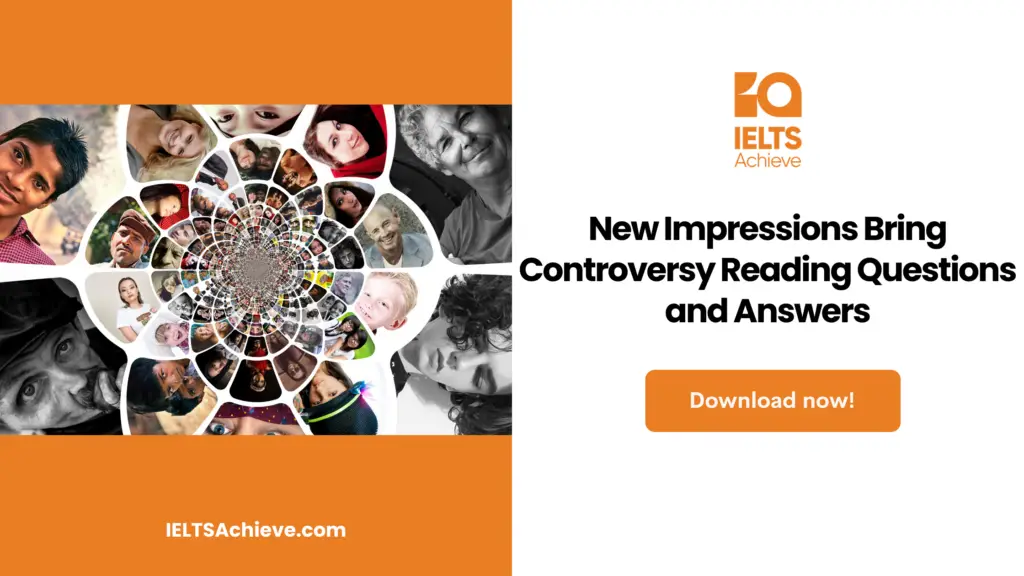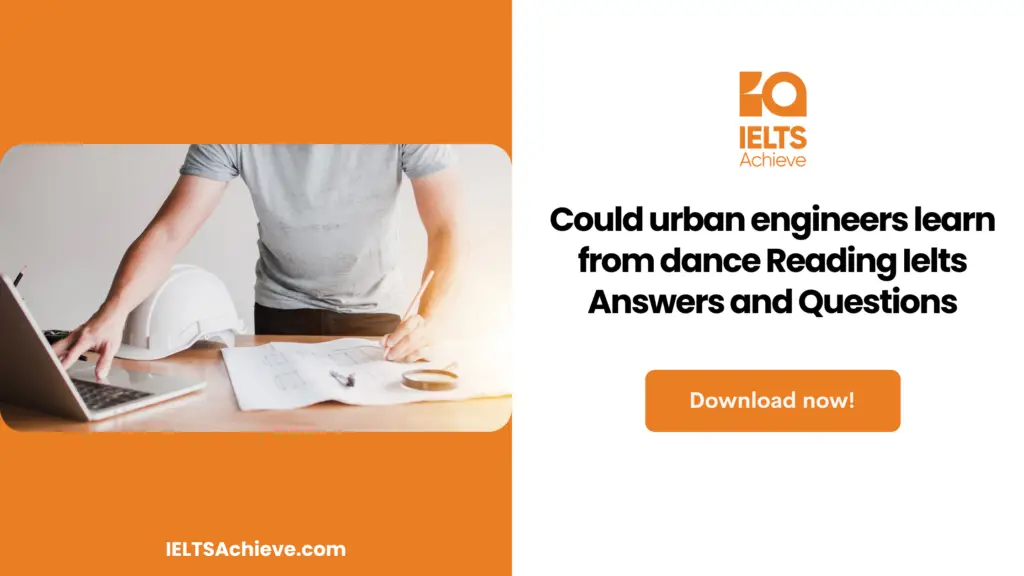The Blog post contains the following IELTS Reading Questions:
- IELTS Reading Matching Information
- IELTS Reading True/False/Not Given
Stay informed and prepared for success – Explore our comprehensive Reading Test Info page to get valuable insights, exam format details, and expert tips for mastering the IELTS Reading section.
IELTS Reading Passage – New Impressions Bring Controversy

New Impressions Bring Controversy
A. Many of history’s pages reveal that renowned artists have often had to endure obstacles and criticisms before eventually rising to the heights of success in their careers. Nineteenth-century artist Sir John Everett Millais is certainly one of them.
B. Born in 1829 in Southampton, England the youngest son of John William and Emily Mary Millais’ two sons, John Everett showed extraordinary artistic talent from an early age. In time, the family moved to London and as residents, Everett’s parents were determined to give young John an opportunity to develop his talent. A meeting with the president of the London Royal Academy of Art, Sir Martin Archer Shee, was arranged. It was not long before Sir Martin also saw the extraordinary natural artistic ability Everett possessed. As a result, in the summer of 1840 and at the age of 11, Everett became the youngest ever pupil to study art at the academy. His ability and age led to all his teachers affectionately referred to him as The Child. The extra attention shown to Everett eventually caused jealousy among his fellow students. At the beginning of his studies Everett, a thinly-built boy, often found it difficult to cope with the bullying he encountered at the art academy. However, as time went by and his peers became increasingly aware of his artistic talent – even in the complex area of portrait painting – bullying gave way to awe.
C. Over the months and years, Everett spent at the academy he began to concentrate on the theoretical aspects of art. His studies included reading the biographies of past great artists and almost all the books on art that the academy library had. Interestingly, the reading and studying of most of these books was not needed in order to pass his exams. Everett, out of his genuine curiosity and passion for art, spent most of his leisure time at the library. At the school’s practical painting classes, he was well-known for going to considerable lengths to find the right elements needed for his painting – travelling long distances in search of the right natural scenes and paying large sums of money to hire models for his portrait painting. Over the course of his studies at the London Royal Academy of Art, he met two other like-minded artists – Holman Hunt and Gabriel Rossetti – who would later become his lifelong friends and key supporters of his artistic impressions.
D. In 1850, he held his first solo painting exhibition in London. It was a non-traditional exhibition in terms of style and pattern and proved to be controversial in terms of the subject matter displayed – the social class system. Everett displayed art on the topic of hierarchical or class distinctions between individuals and groups in English society. Although a small portion of art lovers praised his exhibition, he was strongly attacked by most of the art critics of the day. Some of his paintings on religious matters, which portrayed religion as something quite ordinary, made the conservative segment of the society angry.
E. Over the years, with the support of his two best friends Holman Hunt and Gabriel Rossetti, Everett started a movement which he named the Pre-Raphaelite Brotherhood (PRB). The intention of his PRB movement was to reform art by rejecting the concept of the Renaissance(1) movement which, he believed, was a mechanical approach to art influenced by narrow academic teaching. Once the PRB movement was formally launched, attacks from art critics throughout England intensified. The PRB movement contradicted the views of almost all the other established artists in the country and led to John Ruskin, the foremost art critic of that time, formally meeting Everett with the intention of persuading him to cease the PRB. Everett did not agree to give up his ideologies so no agreement between the two was reached. However, the incident had a direct consequence on Everett’s personal life. Effie, Ruskin’s wife, met Everett and over a period of time started to develop an attraction to him. Eventually, Effie divorced Ruskin and married Everett.
F. Art historians today believe that the marriage of Everett and Effie acted as a catalyst in turning public opinion in his favour and inspired him to devote greater effort to his PRB movement. In 1865, Everett finished a series of paintings based on his ideologies and in 1876 with such masterpieces as ‘Twins’, ‘The Marquis of Salisbury’ and ‘The Lady Campbell’ became the most successful portrait painter of the day.
G. In 1890, he was awarded the title of Sir and was made the president of the England Royal Art Academy. By that time, his works not only won the adoration of the masses in England but many other European countries as well. Unfortunately, shortly after being given the title of Sir, he fell ill and was wrongly diagnosed as having influenza. In 1894 it was discovered that he was actually suffering from cancer. During July 1896, his situation became very critical and the queen of England personally contacted his doctors offering her full support. Sir John Everett however, passed away on the 13th of August in 1896.
(1) A cultural movement from 14th to17th century, which originated in Italy and was spread all over Europe.
Unlock your full potential in the IELTS Reading section – Visit our IELTS Reading Practice Question Answer page now!
Recommended Questions:
Renewable Energy IELTS Reading Question with Answer
Questions 28-35
The passage has seven paragraphs A-G.
Which paragraph contains the following information?
Write the correct letter A-G in boxes 28-35 on your answer sheet.
NB You may use any letter more than once.
28. An event that led to a change in viewpoint.
29. A positive example of doing more than what was required.
30. An example of incorrect information being given.
31. A minority that showed appreciation.
32. An example of a positive change in human interaction.
33. A description of Everett’s physical appearance.
34. An example of an official organisational beginning.
35. An activity that was supposed to bring change.
Master the art of matching information and boost your score in the IELTS Reading section. Click here to access our step-by-step guide on handling Matching Information questions effectively.
Questions 36-40
Do the following statements agree with the information given in the text?
In boxes 36-40 on your answer sheet, write
TRUE if the statement agrees with the information
FALSE if the statement contradicts the information
NOT GIVEN if there is no information on this
36. Everett’s parents moved to London so he could study at the London Royal Academy.
37. In time, both his peers and teachers admired Everett.
38. As a youngster, Everett was interested in other artists.
39. Everett’s second exhibition featured art about the economic and social position.
40. Everett’s plan for the PRB was to make art better.
Enhance your skills in identifying information as True, False, or Not Given. Click here to discover expert strategies and techniques for mastering this question type in the IELTS Reading section.
Unlock your full potential in the IELTS Reading section – Visit our IELTS Reading Practice Question Answer page now!
Recommended Questions:
Renewable Energy IELTS Reading Question with Answer
Answer:
28. F
29. C
30. G
31. D
32. B
33. B
34. E
35. E
36. NG
37. TRUE
38. TRUE
39. FALSE
40. TRUE

We hope you found this post useful in helping you to study for the IELTS Test. If you have any questions please let us know in the comments below or on the Facebook page.
The best way to keep up to date with posts like this is to like us on Facebook, then follow us on Instagram and Pinterest. If you need help preparing for the IELTS Test, join the IELTS Achieve Academy and see how we can assist you to achieve your desired band score. We offer an essay correction service, mock exams and online courses.

